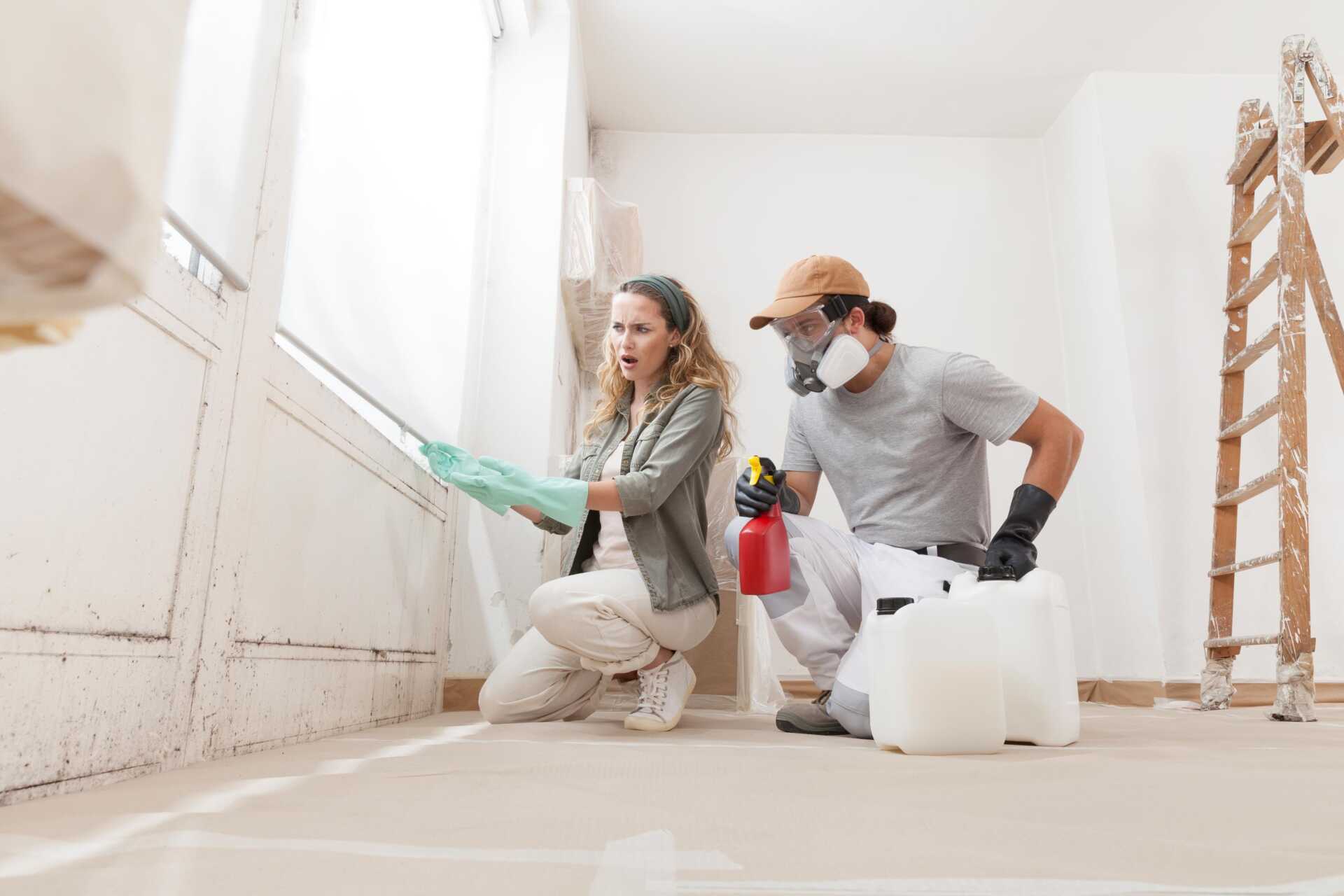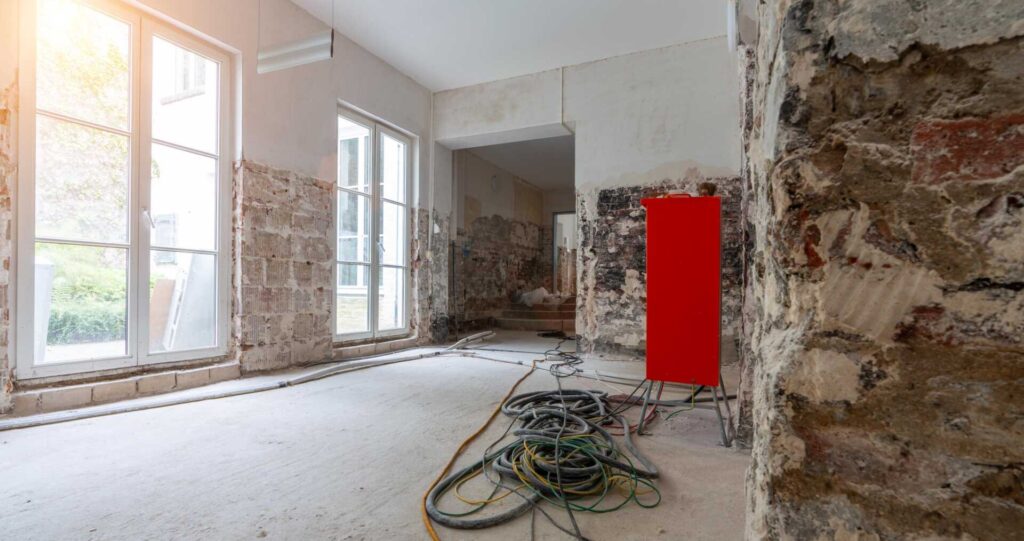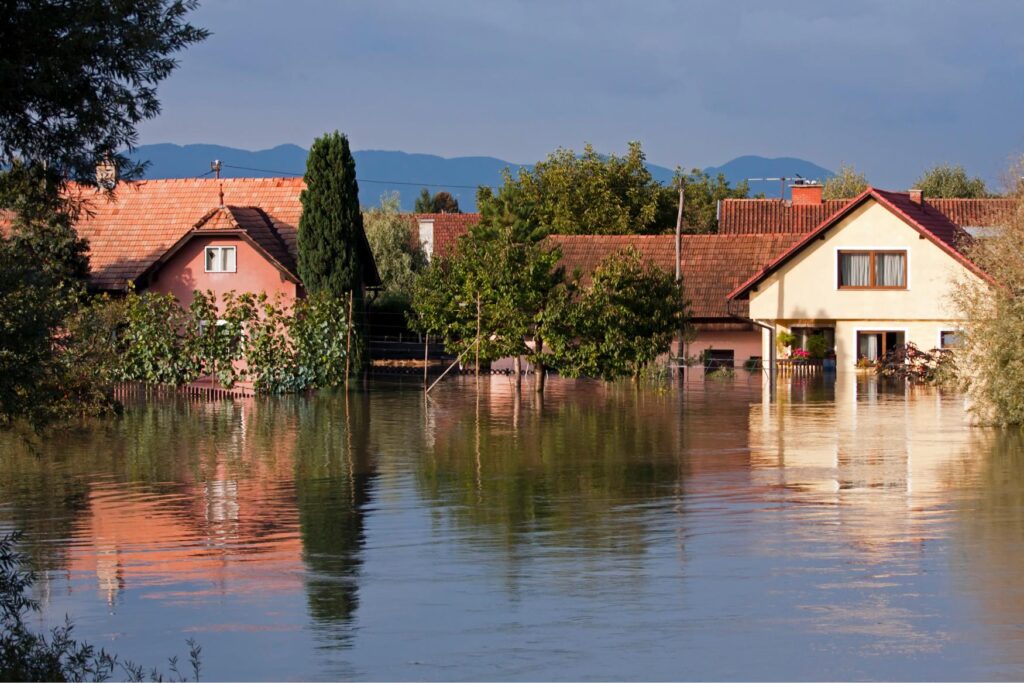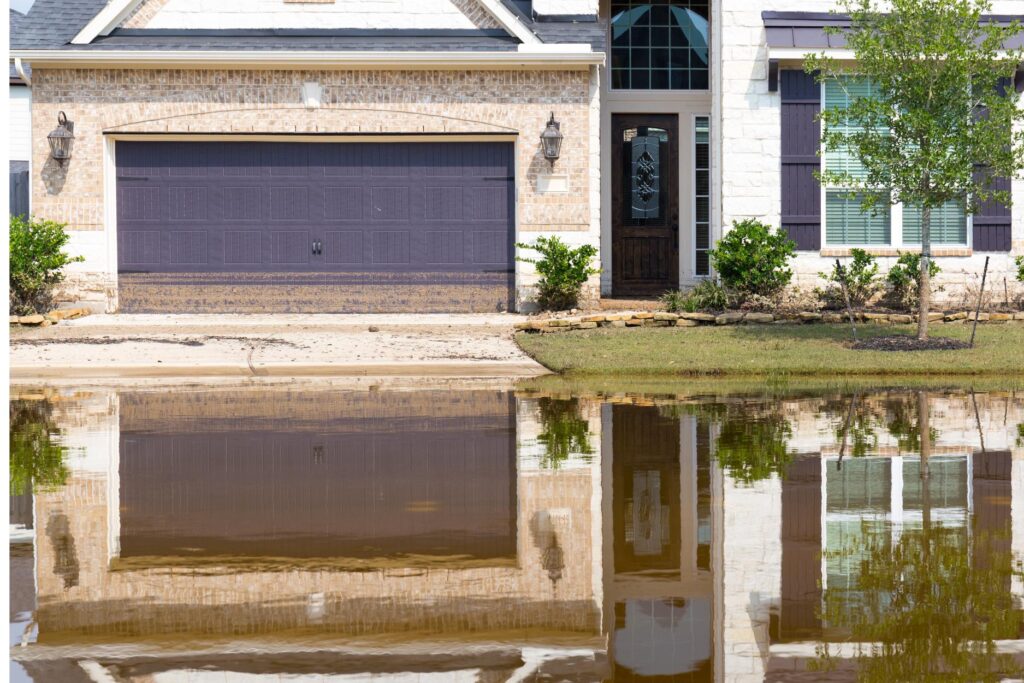Contents
When it comes to safeguarding your living environment from mold, a multifaceted approach is key. By combining various prevention methods, you can create a strong defense against mold infestations. From controlling moisture to implementing effective cleaning techniques, each aspect plays an essential role in maintaining a mold-free space. Understanding the intricate balance required for successful mold prevention is vital for achieving long-lasting results. So, why not explore the array of integrated strategies available to strengthen your defenses against mold growth and ensure a healthier indoor environment for you and your loved ones?
Importance of Integrated Prevention
Integrated mold prevention methods are necessary for maintaining a healthy indoor environment. By employing a combination of strategies, you can effectively mitigate the risks associated with mold growth in your living spaces. One pivotal aspect of integrated prevention is moisture control. Moisture is a primary factor that promotes mold growth, making it imperative to address any leaks, condensation, or water intrusion promptly.
By maintaining ideal indoor humidity levels below 60%, you can greatly reduce the likelihood of mold development.
Proper ventilation is another key component of integrated mold prevention. Ensuring adequate airflow in your home helps to regulate moisture levels and prevent stagnation, which can create ideal conditions for mold spores to thrive. Additionally, using exhaust fans in high-moisture areas like bathrooms and kitchens can help expel excess humidity, further inhibiting mold growth.
Regular inspection and maintenance of your home’s plumbing, roofing, and foundation are crucial for early detection of potential moisture issues. By promptly addressing any leaks or water damage, you can prevent mold from taking hold and spreading throughout your property. Incorporating mold-resistant materials in construction and renovation projects can also contribute to long-term mold prevention efforts.
Understanding Mold Growth Factors
To effectively prevent mold growth, you must comprehend the various factors that contribute to its development.
Mold thrives in environments with high humidity levels and organic materials for nourishment.
Mold Growth Conditions
What’re the key factors that contribute to mold growth in indoor environments? Mold growth conditions are influenced by several factors.
First and foremost, moisture is a vital element for mold to thrive. High humidity levels, water leaks, or flooding can create ideal conditions for mold to grow.
Additionally, temperature plays a significant role, with most molds thriving in temperatures between 77-86°F (25-30°C). Lack of proper ventilation can also contribute to mold growth by trapping moisture indoors.
Furthermore, the presence of organic materials such as wood, paper, or fabrics provides a food source for mold to feed on. Dust and dirt can also contain organic matter, promoting mold growth if left unaddressed.
Lastly, darkness favors mold growth, as it thrives in dimly lit areas.
Understanding these mold growth conditions is essential in implementing effective prevention strategies. By controlling moisture levels, maintaining proper ventilation, and promptly addressing water leaks, you can create an environment less conducive to mold growth.
Preventing Mold Growth
How can you effectively prevent mold growth by understanding the key factors that contribute to its development in indoor environments? Mold growth can be controlled by managing various factors that create favorable conditions for its proliferation. Here are some essential points to take into account:
Moisture Control: Maintain indoor humidity levels below 60% to inhibit mold growth.
Proper Ventilation: Ensure sufficient ventilation in areas prone to dampness, such as bathrooms and kitchens.
Prompt Repairs: Address any leaks or water intrusions promptly to prevent moisture buildup.
Humidity Monitoring: Use hygrometers to track humidity levels and take action if they exceed recommended levels.
Reduced Clutter: Decluttering spaces can prevent mold by eliminating potential hiding spots and improving air circulation.
Identifying Common Mold Types
When identifying common mold types, it’s important to understand the basics of mold identification. Different types of mold pose varying health risks, making it essential to recognize them accurately. By being able to distinguish between mold species, you can implement targeted prevention strategies to mitigate health hazards effectively.
Mold Identification Basics
To effectively combat mold growth in your environment, it’s important to be able to identify common types of mold. Mold identification basics are essential in implementing successful prevention strategies. Here are some key points to help you recognize different types of mold:
Stachybotrys: Also known as black mold, it appears slimy and greenish-black in color, commonly found in areas with water damage.
Aspergillus: This type of mold can come in various colors, including yellow, green, white, or black, and is often found in food and in air conditioning systems.
Penicillium: Usually blue or green, Penicillium mold is commonly found on water-damaged materials and food.
Cladosporium: This mold is typically olive green or brown and can grow on fabrics, carpets, and wood surfaces.
Alternaria: Alternaria mold is dark green or brown with a woolly texture, commonly found in damp areas like showers and under sinks.
Understanding these common molds will enable you to take appropriate measures to prevent their growth and maintain a healthy living environment.
Health Risks Associated
Having identified common types of mold in your environment, it’s important to understand the health risks associated with these molds. Mold types like Stachybotrys chartarum (black mold) can produce mycotoxins that may lead to respiratory issues, fatigue, and headaches.
Aspergillus molds can cause allergic reactions, respiratory infections, and inflame the lungs. Alternaria molds are known allergens that can trigger asthma symptoms and cause skin irritation.
Cladosporium molds are common outdoor molds that can enter indoor spaces, leading to respiratory problems and skin irritation. Penicillium molds can cause allergic reactions and respiratory issues.
Understanding the specific health risks associated with each mold type can help you take appropriate preventive measures to safeguard your health and well-being. Regularly inspecting your surroundings for signs of mold growth, addressing any moisture issues promptly, and maintaining good ventilation are vital steps in reducing exposure to these health risks.
Prevention Strategies Explained
Upon understanding the health risks associated with common mold types, it’s essential to explore prevention strategies by identifying these molds. Identifying the specific mold types present in your environment is critical for implementing effective prevention measures. Here are some key strategies to take into account:
Conduct a thorough examination: Regularly inspect areas prone to mold growth, such as bathrooms, kitchens, basements, and attics.
Monitor humidity levels: Keep indoor humidity levels below 60% to discourage mold growth.
Address water leaks promptly: Fix any leaks in plumbing, roofs, or windows to prevent moisture buildup.
Improve ventilation: Ensure proper airflow in your home by using exhaust fans and opening windows when possible.
Use mold-resistant products: Take into account using mold-resistant paints, drywall, and insulation to prevent mold growth in susceptible areas.
Effective Moisture Control Strategies
An important element of mold prevention in indoor environments is the implementation of effective moisture control strategies. Moisture is a key factor that contributes to mold growth, making it essential to manage and control moisture levels within a space. To effectively prevent mold, it’s vital to keep indoor humidity levels below 60%. Utilizing dehumidifiers can help in achieving this by extracting excess moisture from the air, thereby creating an environment that’s inhospitable to mold growth.
Another effective moisture control strategy is to promptly repair any leaks in plumbing, roofs, or windows. Even minor leaks can lead to significant moisture buildup over time, providing an ideal breeding ground for mold. Regularly inspecting and maintaining these areas can help in identifying and addressing leaks before they escalate into larger issues.
Furthermore, ensuring proper ventilation in areas prone to high humidity, such as bathrooms, kitchens, and basements, can aid in moisture control. Ventilation solutions like exhaust fans and opening windows can help in reducing humidity levels and promoting air circulation, thereby hindering mold growth.
Ventilation Solutions for Mold Prevention
To combat mold growth effectively, implementing appropriate ventilation solutions is crucial. Inadequate ventilation can lead to moisture buildup, creating a favorable environment for mold to thrive. Here are some ventilation solutions to prevent mold:
Use Exhaust Fans: Install exhaust fans in areas prone to high moisture levels like bathrooms and kitchens to eliminate humid air and prevent condensation.
Cross Ventilation: Promote airflow by strategically placing windows and doors to allow for cross ventilation, reducing humidity levels.
Dehumidifiers: Consider using dehumidifiers in areas with persistent dampness to maintain ideal humidity levels below 60%.
Ventilation Systems: Invest in mechanical ventilation systems like air exchangers or heat recovery ventilators to continuously bring in fresh air and expel stale, moist air.
Regular Ventilation Maintenance: Ensure vents, ductwork, and fans are clean and free of obstructions to maintain proper airflow and prevent moisture buildup.
Sealants and Barrier Methods
When looking to enhance mold prevention efforts, incorporating sealants and barrier methods becomes essential. Sealants play a pivotal role in preventing moisture intrusion, a key factor in mold growth. By sealing gaps, cracks, and joints in building materials, you create a barrier that prevents water from seeping into areas where mold can thrive. Barrier methods involve using materials that resist moisture, such as moisture-resistant drywall, waterproof paints, and vapor barriers. These methods help maintain dry conditions that discourage mold growth.
To further understand the significance of sealants and barrier methods in mold prevention, refer to the table below:
| Sealants and Barrier Methods | Description | Application |
|---|---|---|
| Silicone Sealant | Highly flexible and durable sealant that resists water penetration. | Ideal for sealing gaps around windows and doors. |
| Mold-Resistant Drywall | Special drywall with additives that make it resistant to mold growth. | Recommended for areas prone to moisture, like bathrooms and kitchens. |
| Vapor Barrier | Material used to prevent moisture from passing through walls, ceilings, and floors. | Install in crawl spaces and basements to inhibit moisture migration. |
Cleaning and Disinfection Techniques
Implementing effective cleaning and disinfection methods is vital in combatting mold growth within indoor environments. Mold spores can easily spread and thrive in damp and poorly cleaned areas, making regular cleaning an essential step in mold prevention.
Cleaning and Disinfection Methods
Use HEPA vacuums: High-Efficiency Particulate Air (HEPA) vacuums are efficient in removing mold spores from surfaces and the air, reducing the chances of regrowth.
Utilize mold-specific cleaners: Choose cleaning products specifically designed to target and eliminate mold to ensure thorough removal.
Scrub surfaces: Use brushes or scrubbing pads to physically remove mold from surfaces, especially in areas prone to moisture buildup.
Regularly clean and dry: Ensure all surfaces are routinely cleaned and dried to prevent mold from establishing colonies.
Disinfect affected areas: After cleaning, use disinfectants to kill any remaining mold spores and prevent future growth.
Monitoring and Maintenance Practices
Regular monitoring and maintenance practices are crucial in ensuring mold prevention strategies’ long-term effectiveness. By implementing a structured monitoring schedule, you can promptly identify any signs of mold growth or moisture issues, allowing for swift intervention before the problem escalates.
Regular inspections of areas prone to mold, such as basements, attics, bathrooms, and kitchens, should be conducted, using moisture meters to detect any hidden water intrusions that could lead to mold development.
In addition to monitoring, consistent maintenance of your property is essential for mold prevention. Address any leaks, water damage, or plumbing issues promptly to prevent moisture buildup. Use exhaust fans or dehumidifiers to ensure proper ventilation in high-humidity areas. Clean and inspect HVAC systems regularly to prevent mold spores from circulating throughout your property.
Establish a maintenance checklist that includes tasks like cleaning gutters, repairing roof damage, and sealing cracks and crevices where moisture can seep in. Regularly clean and replace air filters to improve air quality and reduce the likelihood of mold growth.
Professional Remediation Services
To ensure thorough mold prevention, it’s vital to recognize the significance of professional remediation services in dealing with mold issues beyond regular maintenance practices. Professional remediation services offer specialized expertise and equipment necessary for effectively addressing mold problems. Here are some key points to keep in mind:
Specialized Knowledge: Remediation experts possess detailed knowledge of mold types, growth patterns, and effective removal techniques.
Advanced Equipment: Professionals utilize specialized tools such as HEPA vacuums, air scrubbers, and moisture meters to detect and eliminate mold effectively.
Safety Protocols: Trained professionals adhere to strict safety protocols to safeguard themselves and occupants from exposure to mold spores and mycotoxins.
Comprehensive Solutions: Remediation services provide complete solutions that remove existing mold and tackle underlying moisture issues to prevent future growth.
Regulatory Compliance: Professionals are well-informed about industry regulations and guidelines, ensuring that remediation activities meet legal standards.
Review
You can effectively prevent mold growth in your indoor environment by implementing a combination of moisture control, ventilation solutions, sealing techniques, cleaning practices, and regular monitoring. But have you considered the long-term benefits of investing in professional remediation services? Don’t wait until mold becomes a serious issue – take proactive steps now to secure a mold-resistant space for yourself and your loved ones.




